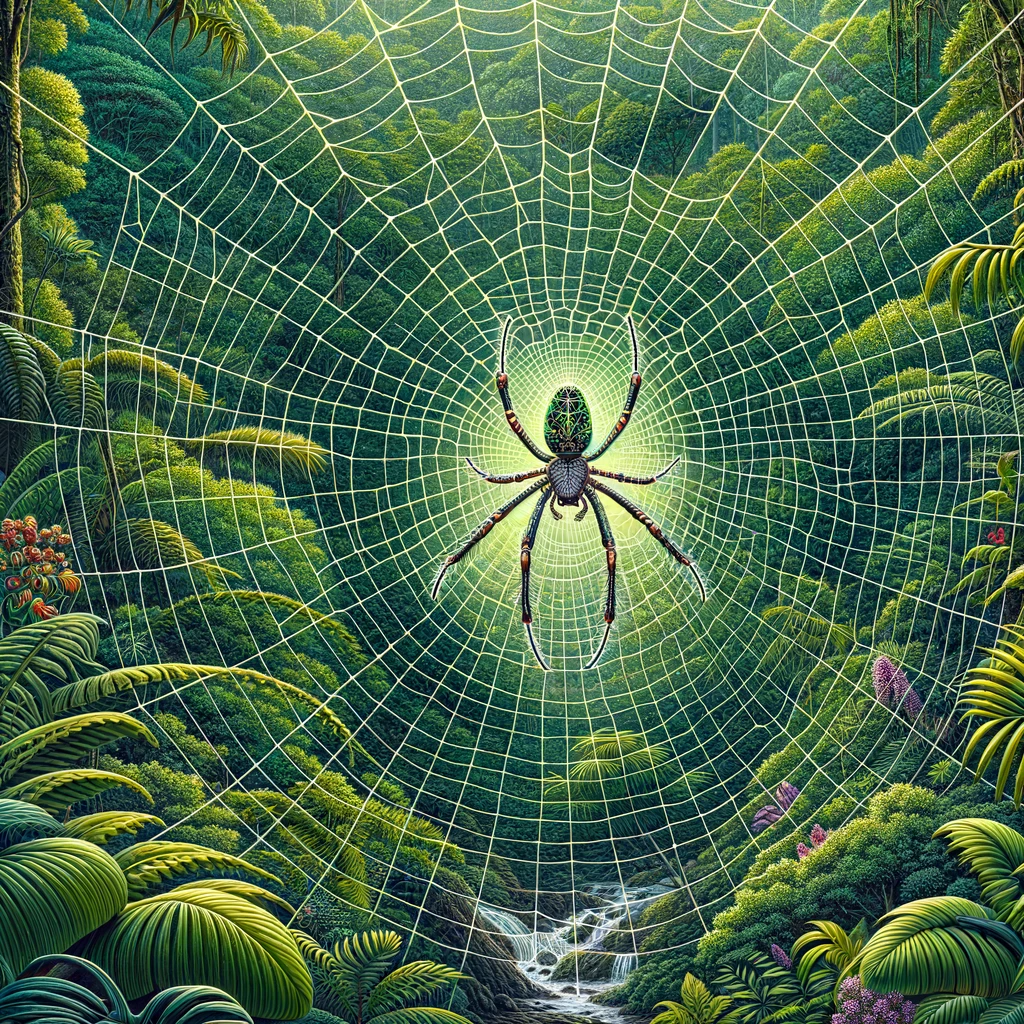
Spiders are among the most fascinating and diverse creatures on our planet, with over 45,000 known species exhibiting a myriad of forms, behaviors, and ecological niches. One of the most distinct physical characteristics of spiders is their remarkably tiny waist, a feature that has intrigued both scientists and laypeople alike. This article delves into the Brazilian folklore that offers a whimsical explanation for this unique trait and examines the scientific perspective to understand the true reasons behind the spider’s slender waist.
Brazilian Folklore: The Tale of the Spider’s Waist
In the rich tapestry of Brazilian folklore, there’s a charming story that explains why spiders have a tiny waist. According to this tale, there was once a spider who was incredibly proud of her weaving skills. She would spend hours crafting intricate webs that were not only functional for catching prey but also aesthetically beautiful. Her pride, however, turned into arrogance, and she began to boast that her weaving skills were better than even those of the goddess of weaving.
The goddess, upon hearing these boasts, decided to teach the spider a lesson in humility. She challenged the spider to a weaving contest. The spider, blinded by her arrogance, accepted. The contest began, and both the goddess and the spider worked tirelessly, creating the most elaborate and exquisite webs. However, the goddess’s web was not only more beautiful but also more durable.
Defeated and humiliated, the spider was cursed by the goddess to have a tiny waist as a reminder of her arrogance and to symbolize the fine line between pride and hubris. This tale is often told to children not just as an explanation for the spider’s physical appearance but also as a moral lesson about the dangers of arrogance and the importance of humility.
Scientific Perspective: The Reason Behind the Spider’s Tiny Waist
From a scientific standpoint, the spider’s tiny waist, or the “pedicel,” is a result of evolutionary adaptations that have allowed spiders to become effective predators. The spider’s body is divided into two main parts: the cephalothorax (head and thorax fused together) and the abdomen. The pedicel is a narrow, flexible connection between these two parts.
This slender waist offers several advantages:
- Flexibility and Mobility: The tiny waist allows the spider’s abdomen to move independently from the cephalothorax, aiding in the production of silk and the construction of webs.
- Enhanced Sensory Perception: The separation between the two body parts helps in reducing the transfer of vibrations. This is crucial as spiders heavily rely on vibrations to sense prey and communicate.
- Defensive Mechanism: In some species, the narrow waist can act as a natural defense mechanism, allowing the spider to contract and protect its vital organs when threatened.
Conclusion
The contrast between the whimsical Brazilian folklore and the scientific explanation for the spider’s tiny waist offers a fascinating glimpse into how different cultures and disciplines interpret the natural world. While folklore provides a moralistic and cultural perspective, science offers an understanding rooted in biological and evolutionary principles. Both views, however, reflect the human desire to make sense of the world around us, each in its own unique way.
